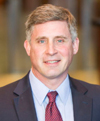Every summer, the dogs days of August hit Texas where each new day resembles the last - hot, dry and sunny. Don’t get me wrong, I love the sun and the outdoors, but the heat can start to wear on you during the long summer months. For us wireless folks, however, this summer was unlike any other – full of surprises, world records, and teeming with the promise of new mountains to climb.
On July 14th, the FCC announced new rules to open up 11 GHz of spectrum for flexible, mobile and fixed use wireless broadband – 3.85 GHz of licensed spectrum and 7 GHz of unlicensed spectrum. The new rules create a new Upper Microwave Flexible Use service in the 28 GHz (27.5-28.35 GHz), 37 GHz (37-38.6 GHz), and 39 GHz (38.6-40 GHz) bands, and a new unlicensed band at 64-71 GHz. This move extends beyond current generations of mobile communication, increasing data rates and reliability and lowering latency for device to device communication, spectrum usage, and multiple antenna transmission. By doing so the FCC has extended the capabilities of 5G wireless access and definitively put the United States at the forefront of the 5G race.
The next day, FCC chairman Tom Wheeler, the National Science Foundation, non-profit organization US Ignite, and representatives from several companies including NI announced the Platforms for Advanced Wireless Research. With over $400M in funding, the Platforms for Advanced Wireless Research initiative seeks to create four “at scale” wireless test beds located in cities throughout the US. The unprecedented scale and investment highlights the US government’s acknowledgement of the importance of 5G to the world and the desire for the US to drive it forward. I was honored to speak at the announcement, and as Prof Ted Rappaport pronounced during a panel later that day it was indeed a “double rainbow day” for US wireless researchers.
And just as the long days of August kicked into high gear, NI hosted its annual conference, NIWeek 2016 in Austin, Texas. Wireless researchers from all over the world gathered at the 5G Summit to exchange ideas and demonstrate the latest research. Of particular note, Michael Ha of the FCC joined panels to discuss the mmWave spectrum issues and the US roles in defining 5G spectrum, as well as sharing unlicensed spectrum between licensed and unlicensed carriers. Dr. Arun Ghosh from AT&T Wireless Research took to the NIWeek keynote stage to discuss the group’s novel mmWave channel sounder that captures channel data at 28 GHz comprehensively to create the most accurate models in the world. And with the Olympics taking place in August, it only seemed right that Prof Ove Edfors from Lund University in Sweden and Prof Andrew Nix from the University of Bristol in the UK present on their Massive MIMO prototype that set new world records in spectral efficiency achieving 145 bits/s/Hz using a 128 antenna system!
5G is indeed gearing up and unlike summers past, rest and relaxation took a backseat as the significance and importance of 5G gathered even more momentum and urgency. NI is particularly excited to be working so closely with academia, industry, and governments to drive the 5G agenda forward. The “everything after” seems most poignant as new stakes have been thrust into the ground and researchers work furiously to meet these once seemingly unattainable objectives. Much progress has been made this summer and I believe we will look back fondly at this time where a re-energized research community focused on a bright and very wireless future.

